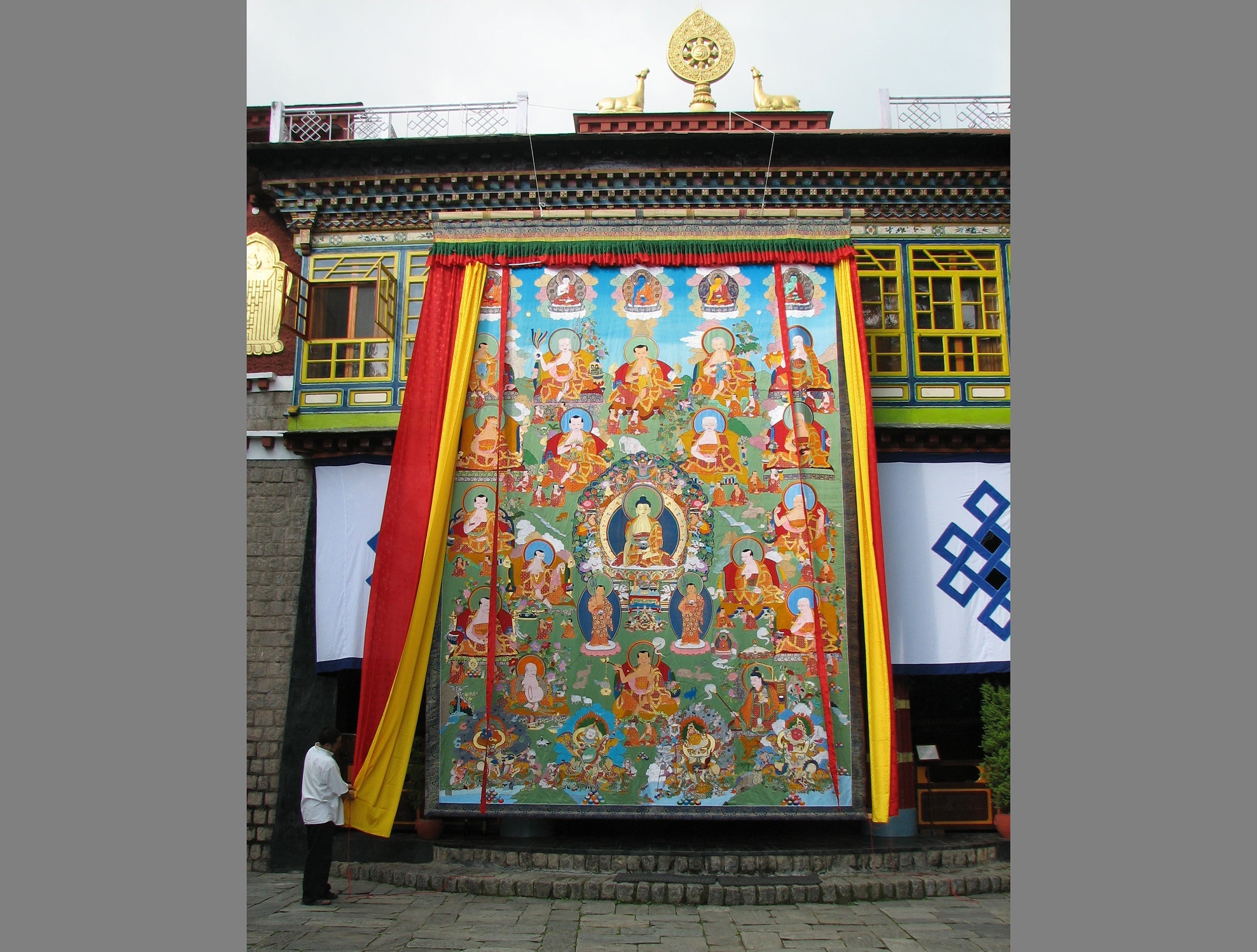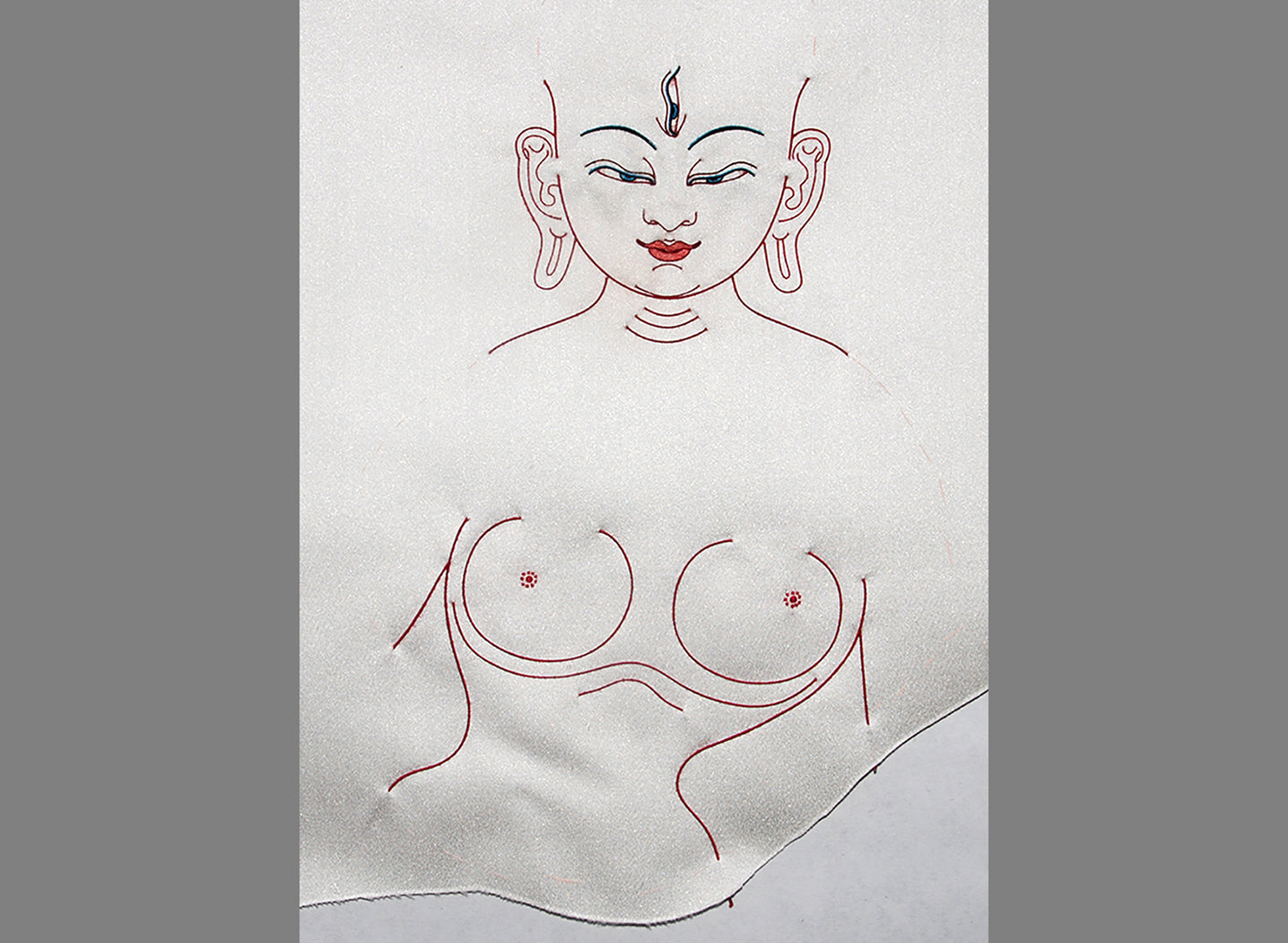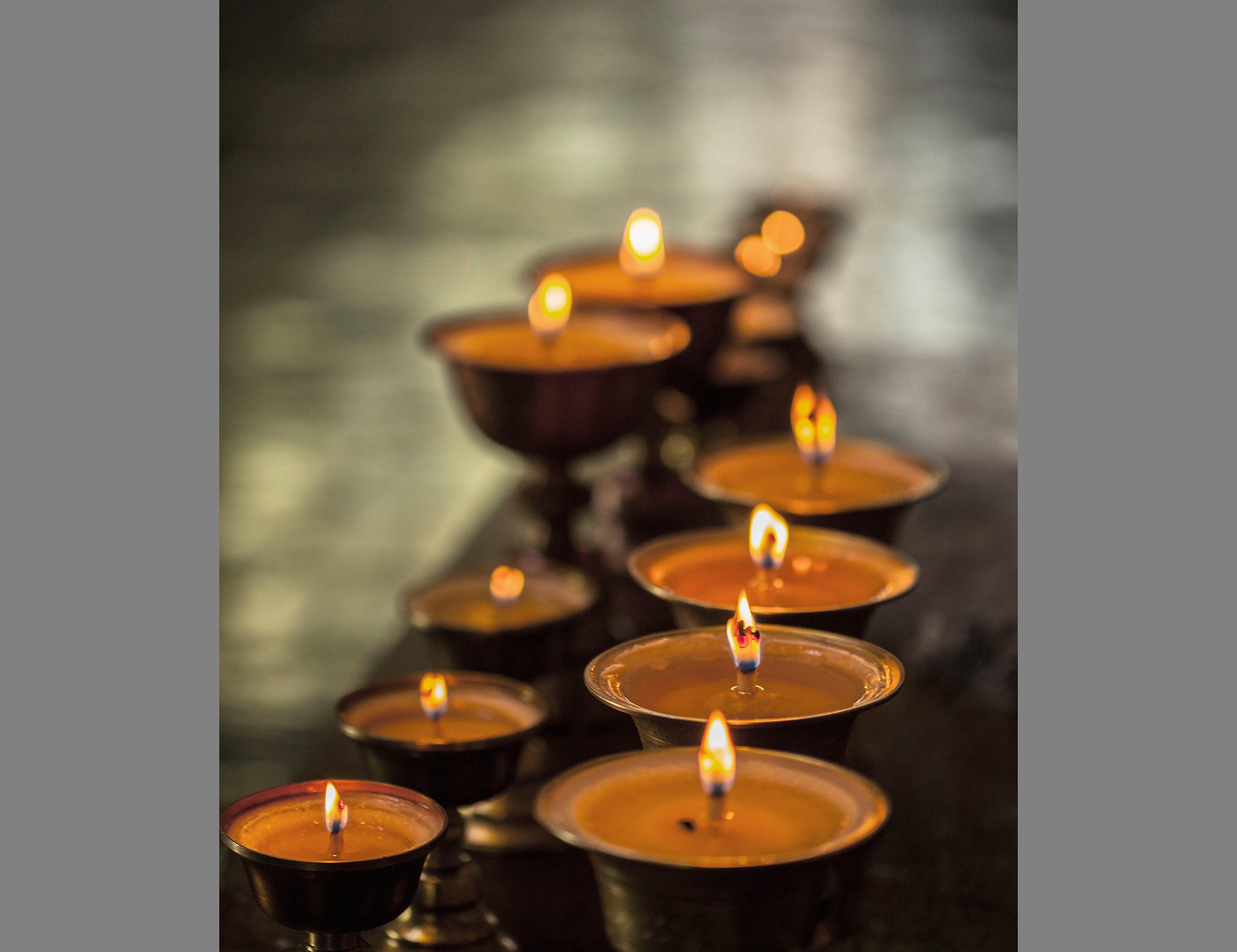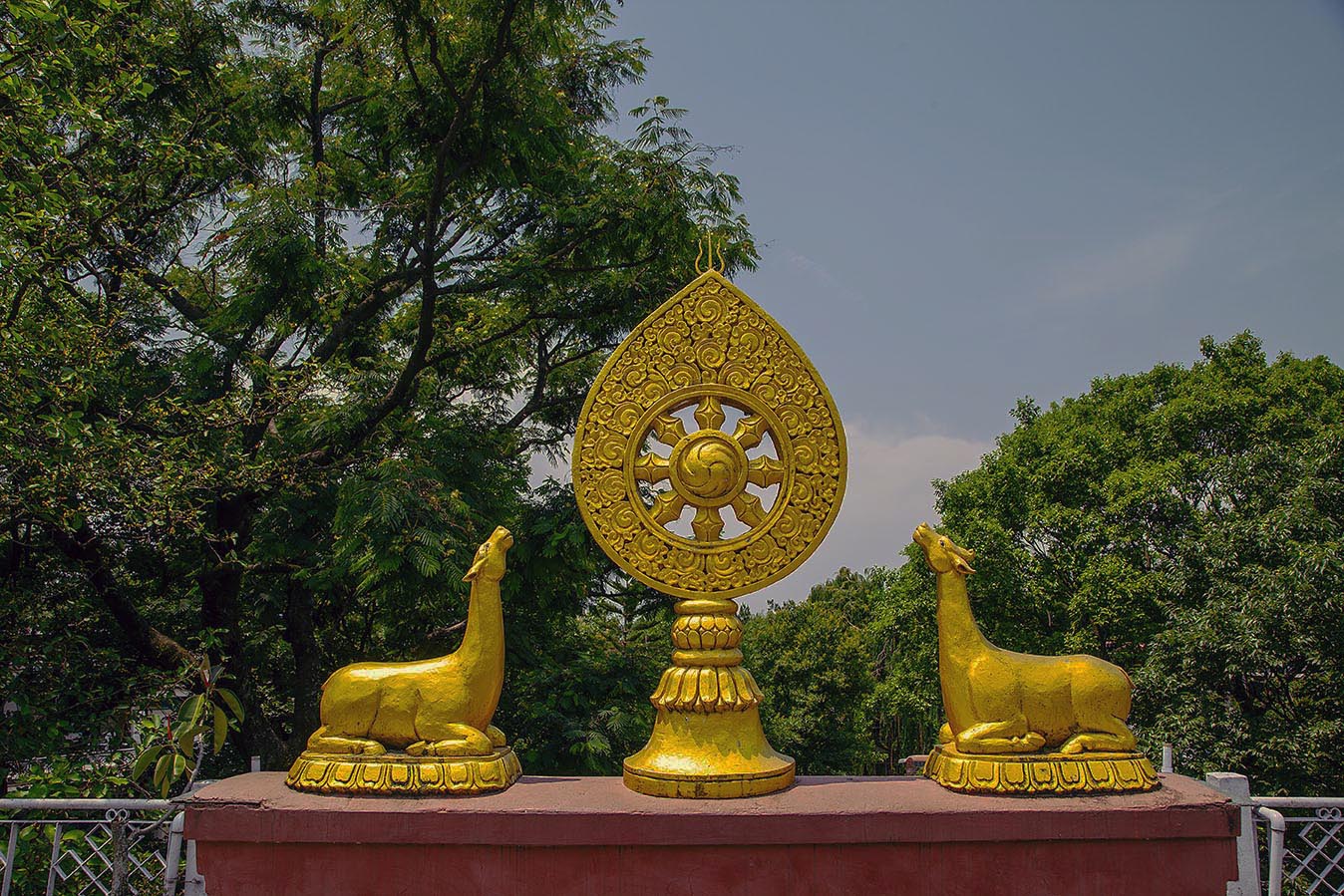
Appliqued Thangka at Norbulingka
Applique is an ancient art from Central Asia. The earliest examples, found in Hun tombs, were felt decorative and utilitarian objects. Later dated pieces, mainly banners, originated in the Dung Huang caves.
In the 16th century, artisans began using brocade and fine silks to create thangkas and temple decorations. Applique work was widespread in Tibet and Mongolia, assembled from hundreds of pieces couched with silk-wrapped horsehair and assembled to make exquisite representations of the deities of the Buddhist pantheon. They varied largely in size, the smallest being only a few feet, while the largest, were several stories in length. Referred to as kyigus, they were unfurled on special occasions, hung on the front of the Potala Palace or on a designated spot in that faced the monastery.
Norbulingka has been making applique more than 25 years. In Tibet, artistic traditions were passed from master to disciple, and our applique master, late Temba Chophel, was trained by the last great applique master, Gyeten Namgyal, former head of the tailoring guild, who began his career working for the 13th Dalai Lama. Temba Chophel later became a thangka painter, and came from Lhasa to Norbulingka at its very beginning, in 1989. In those times, applique artists had to depend on thangka painters for the proportions of the deities and the design, and Temba Chophel, having acquired both disciplines, decided to merge the two and trained several thangka painters in applique work.
Our applique masters use the finest brocades, woven in Varanasi by the same company who supplied Tibetan applique masters over a hundred years ago, and horsehair acquired from Tibet and Mongolia. The workshop makes thangkas of over 30 different deities as well as larger, custom ordered pieces. Our largest thangka, of the Sixteen Arhats is 15ft high and took twenty artisans over one year to make.













